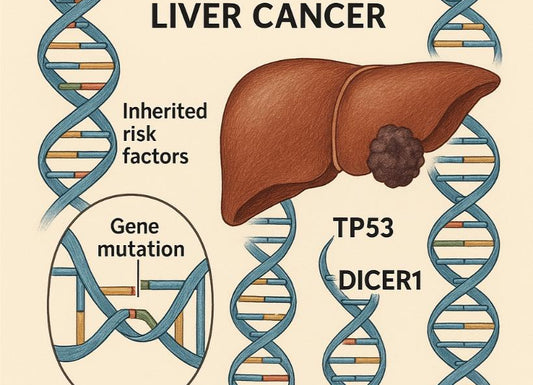Life Expectancy with Fatty Liver Disease: What You Need to Know
 Written By
Yusela Aquino
Written By
Yusela Aquino

Your liver might be quietly drowning in fat—long before you feel a single symptom. In fatty liver disease (aka hepatic steatosis), there is excessive lipid accumulation in the liver cells. This can cause impairment liver function and contribute to your body’s metabolism to malfunction.
There are two main forms: alcoholic fatty liver disease (AFLD), which is due to chronic alcohol consumption, and nonalcoholic fatty liver disease (NAFLD), which is strongly related with obesity, insulin resistance, dyslipidemia, and metabolic syndrome.
Given the liver’s central role in metabolic homeostasis, disease progression can have significant systemic implications. Early detection using non-invasive assessments and lifestyle interventions can mitigate progression and improve long-term health.
How Fatty Liver Disease Influences Mortality Risk
The liver has a remarkable capacity to regenerate, but repeated insult to the liver caused by excess fat can contribute to complications beyond liver dysfunction, including cardiovascular disease (CVD) and malignancy. Life expectancy is influenced by comorbidities such as type 2 diabetes, hypertension, and genetic predispositions.
Studies indicate that people with simple steatosis (fatty liver without inflammation) may have life expectancies comparable to the general population. However, individuals with advanced fibrosis or cirrhosis face significantly increased mortality risk. While only 20-30% of NASH patients progress to cirrhosis, those who do experience reduced survival rates. Early intervention with weight reduction, exercise, and pharmacological therapies can mitigate progression and improve survival outcomes.
Prognostic Implications of NAFLD Progression

Stage 1: Hepatic Steatosis (Simple Fatty Liver)
Accumulation of fat in the liver happens without significant inflammation or scarring. This stage often has no symptoms and is reversible with dietary and lifestyle modifications. Life expectancy is largely unaffected if metabolic risk factors are well controlled.
Stage 2: Nonalcoholic Steatohepatitis (NASH)
NASH is characterized by liver cell injury, inflammation, and early scarring. If left unmanaged, 20-30% of NASH cases may progress to advanced fibrosis or cirrhosis over decades. Life expectancy may be shortened due to increased cardiovascular risk, the leading cause of death in NAFLD patients.
Stage 3: Hepatic Fibrosis (Scarring of the Liver)
As liver scarring (fibrosis) worsens, it starts to affect how well the liver functions. In advanced stages, the risk of cirrhosis and liver cancer increases significantly. Life expectancy depends on how severe the fibrosis is and how well it’s managed, but without treatment, cirrhosis can greatly shorten survival.
Stage 4: Cirrhosis and End-Stage Liver Disease
Extensive fibrosis disrupts hepatic architecture and function, leading to portal hypertension, hepatic decompensation, and increased risk of HCC. Without liver transplantation, survival rates decline dramatically, with a five-year survival rate of approximately 50% in advanced cirrhosis.
Survival Data for NASH-Related Cirrhosis
Patients with cirrhosis due to NASH have an increased risk of liver-related death, with cardiovascular events and malignancy being significant contributors. Those with compensated cirrhosis (before severe liver failure sets in) have a median survival of 9-12 years, whereas decompensated cirrhosis (liver failure symptoms like ascites or variceal bleeding) reduces survival to 2 years without transplantation.
Strategies for Disease Reversal

The management of non-alcoholic fatty liver disease focuses on mitigating metabolic dysfunction by changing the diet, physical activity, and medications where necessary:
- Dietary Changes: A Mediterranean-style diet rich in polyphenols, omega-3 fatty acids, and fiber has demonstrated efficacy in reducing hepatic steatosis and inflammation.
- Exercise: Both aerobic and resistance training improve hepatic insulin sensitivity and reduce intrahepatic fat content.
- Pharmacotherapy: While there are no FDA-approved medications for NAFLD, a type of medication used to treat diabetes called GLP-1 receptor agonists (like semaglutide) have shown promise for NASH.
The Importance of Early Detection

Catching fatty liver disease early can make all the difference in preventing long-term damage. One of the easiest ways to monitor your liver health is through at-home testing.
Ribbon Checkup’s at-home urine test kit offers a convenient way to assess liver function from the comfort of your home. With quick and reliable results, this test can help you track potential liver issues before they progress.
Regular monitoring, combined with lifestyle changes, can empower you to take control of your liver health and improve your long-term well-being. However, at-home test kits like Ribbon Checkup do not replace professional medical advice, diagnosis, or treatment. If you have concerns about your liver or overall health, consult a healthcare provider for a comprehensive evaluation.
Conclusion
Fatty liver disease presents a modifiable risk factor for premature mortality. While simple hepatic steatosis is largely benign, progression to NASH, fibrosis, or cirrhosis significantly affects life expectancy. By integrating evidence-based dietary, lifestyle, and pharmacological approaches, individuals can significantly alter disease trajectory and improve overall longevity. Routine monitoring and early intervention are key to preventing serious liver-related complications.
References
Cells that maintain and repair the liver identified. (2021, March 16). National Institutes of Health (NIH). https://www.nih.gov/news-events/nih-research-matters/cells-maintain-repair-liver-identified
Charatcharoenwitthaya, P., Kuljiratitikal, K., Aksornchanya, O., Chaiyasoot, K., Bandidniyamanon, W., & Charatcharoenwitthaya, N. (2021). Moderate-Intensity Aerobic vs Resistance Exercise and Dietary Modification in Patients With Nonalcoholic Fatty Liver Disease: A Randomized Clinical Trial. Clinical and Translational Gastroenterology, 12(3), e00316. https://doi.org/10.14309/ctg.0000000000000316
Dresden, D. (2023, October 11). What is the life expectancy for cirrhosis of the liver? https://www.medicalnewstoday.com/articles/cirrhosis-of-the-liver-life-expectancy
Fatty liver disease (NAFLD): Symptoms and treatment | Bupa UK. (n.d.). https://www.bupa.co.uk/health-information/digestive-gut-health/non-alcoholic-fatty-liver-disease
Malnick, S. D. H., Alin, P., Somin, M., & Neuman, M. G. (2022). Fatty liver Disease-Alcoholic and Non-Alcoholic: Similar but different. International Journal of Molecular Sciences, 23(24), 16226. https://doi.org/10.3390/ijms232416226
NHS inform. (2023, May 29). Non-alcoholic fatty liver disease (NAFLD) | NHS inform. NHS Inform. https://www.nhsinform.scot/illnesses-and-conditions/stomach-liver-and-gastrointestinal-tract/non-alcoholic-fatty-liver-disease-nafld/
Sharma, P., & Arora, A. (2020). Clinical presentation of alcoholic liver disease and non-alcoholic fatty liver disease: spectrum and diagnosis. Translational Gastroenterology and Hepatology, 5, 19. https://doi.org/10.21037/tgh.2019.10.02
Sharma, A., & Nagalli, S. (2023, July 3). Chronic liver disease. StatPearls - NCBI Bookshelf. https://www.ncbi.nlm.nih.gov/books/NBK554597/
Sualeheen, A., Tan, S., Georgousopoulou, E., Daly, R. M., Tierney, A. C., Roberts, S. K., & George, E. S. (2024). Mediterranean diet for the management of metabolic dysfunction‐associated steatotic liver disease in non‐Mediterranean, Western countries: What’s known and what’s needed? Nutrition Bulletin. https://doi.org/10.1111/nbu.12707
Toshikuni, N. (2014). Clinical differences between alcoholic liver disease and nonalcoholic fatty liver disease. World Journal of Gastroenterology, 20(26), 8393. https://doi.org/10.3748/wjg.v20.i26.8393

Yusela is a medical student with a degree in Biology and a strong foundation in health communication. With experience in both research and clinical settings, she writes clear, evidence-informed content to help patients and caregivers better understand liver health, chronic disease, and transplant care.



